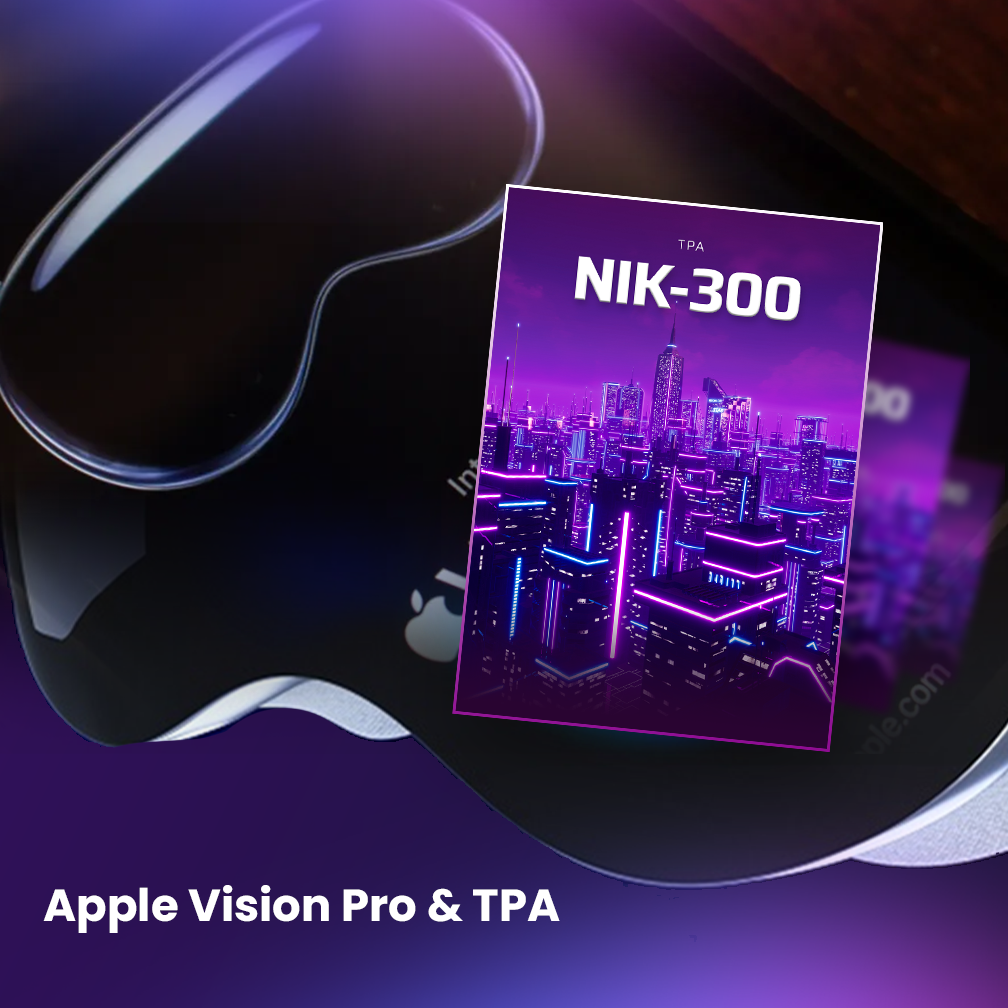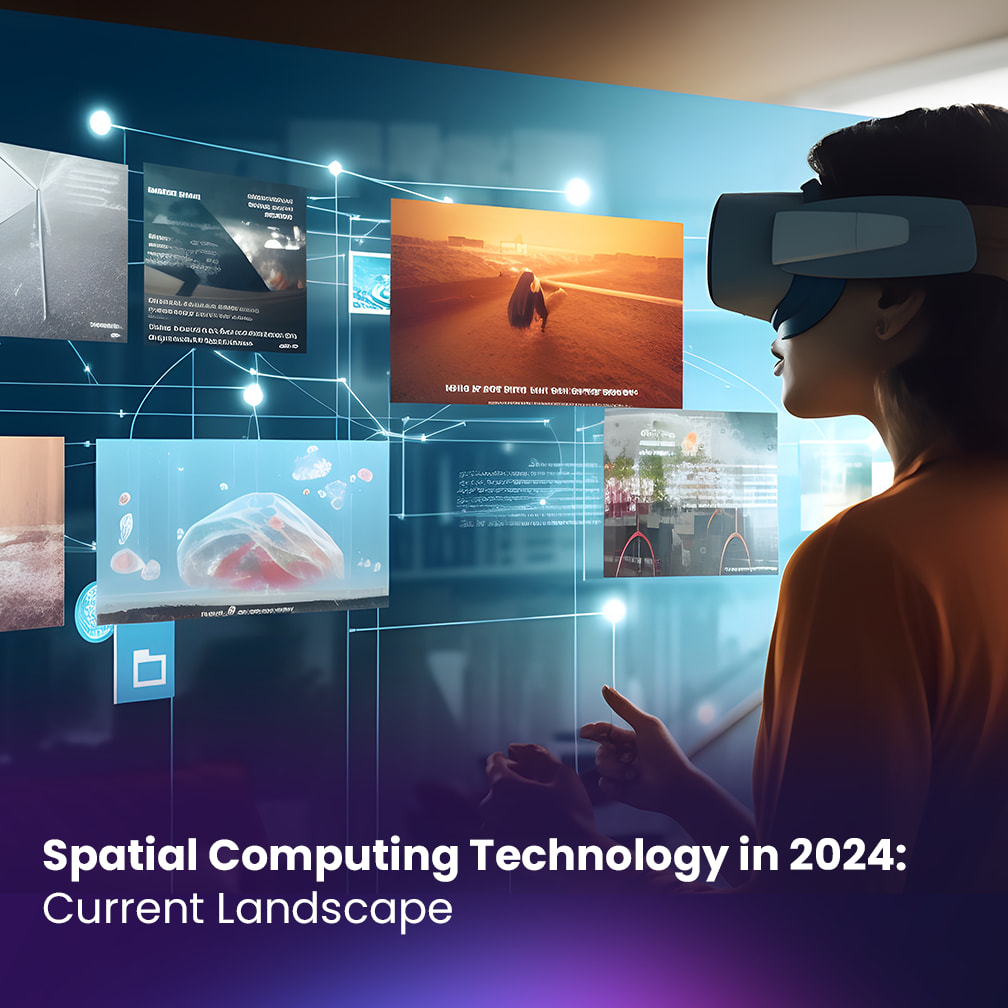TPA and Apple Vision Pro: Revolutionizing Spatial Computing

Table of contents
Introduction
In the world of technological innovation, the compatibility of Teleport Plaque Address (TPA) with the Apple Vision Pro marks an exciting development. TPA shares Apple’s vision for the Spatial Computing era, heralding a new phase in how we interact with digital and physical spaces. This synergy brings forth a transformative experience in spatial computing.
This alignment between TPA and Apple Vision Pro opens the door to groundbreaking possibilities. It lays the groundwork for innovative applications and enhances user interaction in mixed reality environments. More than just technological convergence, it’s shaping user experiences in significant ways.
Moreover, this compatibility promises to make spatial computing more accessible and user-friendly. The combined vision of TPA and Apple ushers in a future where technology seamlessly integrates with our physical world. The potential for enhanced digital navigation and interaction is immense. Let’s delve into how this dynamic compatibility is setting the stage for an exciting future in spatial computing.

The Dawn of a New Era: Apple Vision Pro Meets TPA
Revolutionizing Spatial Navigation
Spatial computing is reaching a crucial juncture, largely due to the synergy between Apple Vision Pro and TPA. The integration of TPA, a Unique Address, with Apple’s ecosystem, ushers in a seamless method for navigating the 3D digital world. This collaboration enhances user interaction within virtual spaces. Furthermore, it simplifies complex navigational challenges in spatial computing. As a result, users can enjoy a more intuitive and natural digital experience. Additionally, this synergy aligns with the evolving demands of modern technology. It is not only innovative but also essential for the advancement of spatial computing. Ultimately, this integration marks a significant milestone in making digital spaces more accessible and user-friendly.
Intuitive and User-Friendly Interaction
TPA’s innovative addressing system, blending three letters with three numbers, offers a simple yet memorable navigation method in spatial environments. This ease of use is crucial for broadening spatial computing’s appeal. Importantly, the system’s straightforward nature demystifies navigating complex 3D spaces. Moreover, it ensures that spatial computing is not only for tech-savvy individuals but accessible to everyone. Additionally, TPA’s intuitive format aids in quick location identification, enhancing user experience. Furthermore, this approach is instrumental in bringing spatial computing into everyday use. By simplifying spatial navigation, TPA is making a significant impact on how we interact with digital environments. Opening doors to new possibilities in the digital world.

Enhanced Digital Interaction
Apple Vision Pro’s cutting-edge technology, combined with TPA’s innovative addressing, enhances user experiences in digital realms. This pairing elevates interactions, making them more immersive and dynamic. Significantly, it’s more than a mere progression; it represents a major leap in spatial computing. Users will notice a marked difference in how they engage with digital environments. Additionally, this fusion brings spatial computing closer to mainstream usability. Furthermore, it bridges the gap between complex technology and everyday users. The integration of these technologies not only simplifies but also enriches digital interactions. Ultimately, this synergy is setting new benchmarks in the field, paving the way for future innovations in spatial computing.
TPA-Apple compatible
The compatibility of TPA with Apple Vision Pro represents a significant stride in the tech world. Aligning closely with Apple’s vision for the Spatial Computing era. Although not a formal partnership, this congruence creates an impressive landscape for spatial computing. TPA’s advanced technology, in sync with Apple’s robust market presence, paves the way for enhanced digital experiences. Certainly, this synergy is not just a mere alignment. Consequently, it’s a substantial step towards transforming how we interact with digital spaces. Moreover, it brings TPA’s innovative approach into a broader spectrum, facilitated by Apple’s established technology. Furthermore, this compatibility is key to making spatial computing more accessible and intuitive for a diverse audience, marking a new chapter in tech advancements.
A Unique Address for Everyone
TPA aims to become the unique address for the spatial computing era, a vision greatly enhanced by its compatibility with Apple. This alignment, while not an official partnership, fosters an environment ripe for the broad adoption and recognition of TPA’s unique capabilities. With Apple’s influence in the tech industry, TPA’s innovative addressing system stands to gain significant traction. All in all, this synergy is key to propelling TPA to the forefront of spatial computing, ensuring its technology becomes a standard in navigating digital spaces. Moreover, aligning with a tech giant like Apple underscores TPA’s potential and positions it as a pivotal player in the evolving landscape of spatial technology.
A Catalyst for Change in Digital Ownership
TPA is transforming the landscape of digital ownership and assets. Though not in an official partnership, its compatibility with Apple’s ecosystem amplifies its significance as a tool for 3D navigation and interaction. This alignment elevates the role of digital addresses, managed by TPA, into valuable, long-term investments. The convergence with Apple’s technology not only enhances TPA’s practicality but also boosts its appeal in the digital domain. This progression positions TPA’s addressing system as an essential asset in digital spaces, indicating a major shift in how we manage and value digital properties, and heralding a new era in digital asset investment.
Leveraging the Power of TPA in Apple’s Ecosystem
Seamless Integration Across Platforms
TPA’s open-source API is revolutionizing the tech landscape, facilitating effortless integration across diverse digital environments. This key feature empowers developers and creators to not only use but also enhance TPA’s system, driving innovation and broadening the scope of spatial computing. The accessibility of this API paves the way for creative solutions and advancements in the field, contributing significantly to the evolution and spread of spatial computing technologies. Additionally, by enabling this level of adaptability and customization, TPA’s open-source API is not just a tool; it’s a catalyst for growth and progress in the digital world.
A Community-Driven Growth Model
Indeed, the integration of TPA with Apple’s ecosystem transcends mere technological collaboration; it’s about cultivating a dynamic community. While not an official partnership, TPA’s system is designed to encourage user participation and engagement. This approach not only nurtures a lively and interactive community but also significantly contributes to the platform’s growth and success. By incentivizing active involvement, TPA creates an environment where users are key drivers in shaping the platform’s evolution, fostering a sense of both belonging and collaboration within the digital space. This community-centric focus of TPA, complemented by its compatibility with Apple’s technology, therefore, marks a significant stride in creating a more connected and interactive digital world.

Looking Ahead: The Future of Spatial Computing with TPA and Apple Vision Pro
Setting New Standards in Technology
The collaboration between Apple and TPA is expected to set new benchmarks in the field of spatial computing. TPA’s intuitive design, combined with Apple’s technological prowess, is poised to make spatial computing both more accessible and appealing to a wider audience.
A Vision for an Interconnected Digital World
The future of spatial computing looks bright with Apple and also TPA at the helm. This partnership is not just about enhancing current technologies; it’s about fostering a more connected, accessible, and innovative digital world. It’s a journey towards transforming not only how we navigate digital spaces but also how we perceive and interact with our evolving digital landscape.
Conclusion
In conclusion, the collaboration between Apple Vision Pro and TPA is a groundbreaking milestone in the realm of spatial computing. It signifies a future where technology is more intuitive, accessible, and integrated into our daily lives. This partnership is not just a step forward in technology; it’s a leap into a future filled with endless possibilities and innovations. Stay tuned as we continue to navigate this exciting journey into the spatial computing era.
FAQs
What Impact Does the TPA-Apple Vision Pro Compatibility Have on Spatial Computing?
The compatibility of TPA with Apple Vision Pro introduces a transformative experience in spatial computing. It heralds a new era in our interaction with digital and physical spaces, offering groundbreaking possibilities and enhanced user interaction in mixed reality environments.
How Does TPA Contribute to the Evolution of Spatial Computing?
TPA plays a crucial role in revolutionizing spatial navigation. By integrating its Unique Address with Apple’s ecosystem, it provides a seamless method for navigating the spatial world. This not only simplifies complex navigational challenges but also makes digital spaces more accessible and user-friendly.
What Makes TPA’s Addressing System Unique?
TPA’s addressing system, blending three letters and numbers, offers an easy, memorable method for spatial navigation. This approach broadens the appeal of spatial computing, making it accessible not just to tech experts but to everyone, and plays a key role in enhancing user experience.
How Does the Apple Vision Pro-TPA Synergy Enhance Digital Interaction?
The synergy between Apple Vision Pro’s technology and TPA’s addressing system enriches user experiences in digital spaces. This combination leads to more immersive interactions and represents a significant leap in the field of spatial computing.
In What Ways is the TPA-Apple Vision Pro Alignment Transforming Technology?
TPA’s compatibility with Apple Vision Pro marks a significant advancement in technology. It aligns closely with Apple’s vision for the Spatial Computing era, creating a new landscape for spatial computing and making the technology more accessible and intuitive for a diverse audience.
How Does TPA Aim to Transform Digital Ownership and Assets?
TPA is redefining digital ownership and assets. Its compatibility with Apple’s ecosystem elevates digital addresses into valuable, long-term investments, indicating a major shift in the management and valuation of digital properties.
What Role Does TPA’s Open-Source API Play in Technological Advancement?
TPA’s open-source API is a key driver in technological innovation. It allows for seamless integration across various digital environments, enabling developers and creators to enhance the TPA system and contribute to the growth of spatial computing.
How is TPA Fostering a Community-Driven Growth Model?
TPA’s integration with Apple’s technology goes beyond technological collaboration; it fosters a dynamic, community-driven growth model. This approach encourages user participation and engagement, significantly contributing to the platform’s growth and success.
What Future Developments are Anticipated in Spatial Computing with Apple and TPA?
The future of spatial computing with Apple and TPA looks promising. It is expected to set new benchmarks in technology, making spatial computing more accessible and appealing. This partnership is about creating a more connected, innovative digital world.
What is the Vision for Digital Interaction in the Era of Apple and TPA?
The vision for digital interaction in the era of Apple and TPA is to transform how we navigate and perceive digital spaces. It signifies a future where technology is more intuitive, integrated, and accessible, opening up endless possibilities and innovations.
Related posts:
 Make Money from Home: Exploring Opportunities in Mexico, Dubai, and Beyond with TPA
Make Money from Home: Exploring Opportunities in Mexico, Dubai, and Beyond with TPA
 Spatial Computing Technology in 2024: Current Landscape
Spatial Computing Technology in 2024: Current Landscape
 Discovering What is the Best TPA: A Comprehensive Guide to Premium Teleport Plaque Address
Discovering What is the Best TPA: A Comprehensive Guide to Premium Teleport Plaque Address
 Unique Address: Revolutionizing Spatial Computing with TPA (Teleport Plaque Address)
Unique Address: Revolutionizing Spatial Computing with TPA (Teleport Plaque Address)





1 Comment
[…] TPA and Apple Vision Pro: Revolutionizing Spatial Computing […]